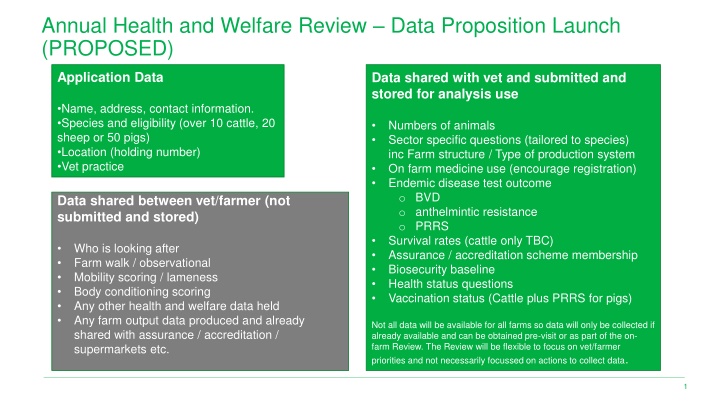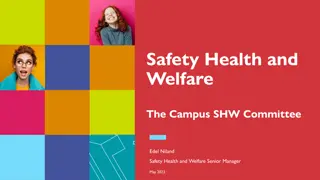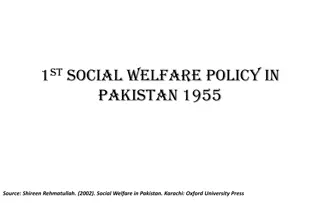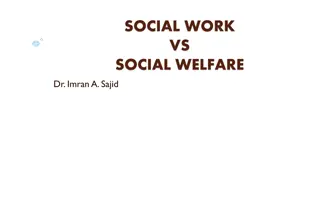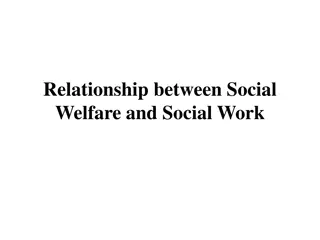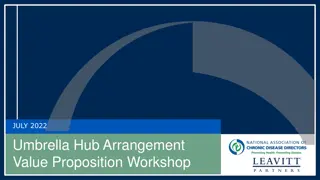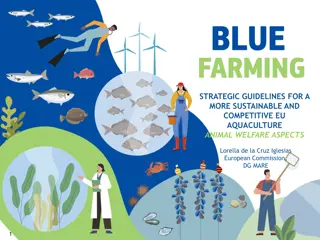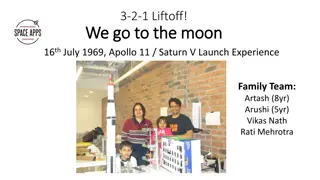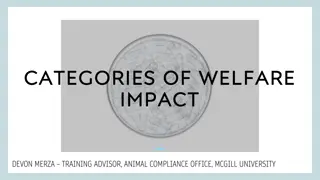Annual Health and Welfare Review Data Proposition Launch
The proposed application for annual health and welfare review data collection includes information on farm details, animal health, medicine use, disease testing outcomes, biosecurity, and vaccination status. Data will be shared with vets, stored for analysis, and used to improve animal welfare practices.
Download Presentation

Please find below an Image/Link to download the presentation.
The content on the website is provided AS IS for your information and personal use only. It may not be sold, licensed, or shared on other websites without obtaining consent from the author.If you encounter any issues during the download, it is possible that the publisher has removed the file from their server.
You are allowed to download the files provided on this website for personal or commercial use, subject to the condition that they are used lawfully. All files are the property of their respective owners.
The content on the website is provided AS IS for your information and personal use only. It may not be sold, licensed, or shared on other websites without obtaining consent from the author.
E N D
Presentation Transcript
Annual Health and Welfare Review Data Proposition Launch (PROPOSED) Application Data Data shared with vet and submitted and stored for analysis use Name, address, contact information. Species and eligibility (over 10 cattle, 20 sheep or 50 pigs) Location (holding number) Vet practice Numbers of animals Sector specific questions (tailored to species) inc Farm structure / Type of production system On farm medicine use (encourage registration) Endemic disease test outcome o BVD o anthelmintic resistance o PRRS Survival rates (cattle only TBC) Assurance / accreditation scheme membership Biosecurity baseline Health status questions Vaccination status (Cattle plus PRRS for pigs) Data shared between vet/farmer (not submitted and stored) Who is looking after Farm walk / observational Mobility scoring / lameness Body conditioning scoring Any other health and welfare data held Any farm output data produced and already shared with assurance / accreditation / supermarkets etc. Not all data will be available for all farms so data will only be collected if already available and can be obtained pre-visit or as part of the on- farm Review. The Review will be flexible to focus on vet/farmer priorities and not necessarily focussed on actions to collect data. 1
Data type Pigs Sheep Dairy Beef Animal numbers Yes Yes Yes Yes Endemic disease test overall outcome Yes Yes Yes Yes On-farm medicine use Encourage input data on Pig EMB (if not already happening) Encourage registration Encourage registration Encourage registration Sector specific questions Series of questions on production unit, imports, accommodation, assurance schemes (Top 10 Questions) Series of questions on enterprise, production unit, production aims, health plan, average age of flock, time of year lambing etc TBC - look to identify if any sector questions would help gather additional information. TBC look to identify if any sector questions would help gather additional information. Biosecurity No although baseline questions could be added. Encourage use of scoring tool. No - although questions could be added. does farm purchase cattle, use quarantine and prevent nose-to-nose contact does farm purchase cattle, use quarantine and prevent nose-to-nose contact Health status Yes Top 10 Questions. assurance/accreditation membership, carry out post- mortem assessments, act on abattoir feedback and nutrition testing assurance/accreditation membership, CHeCS membership, clinical mastitis rate, 3 month rolling average bulk milk SSC assurance/accreditation membership, CHeCS membership Vaccination status Yes (PRRS only) No Yes (Multiple diseases) Yes (Multiple diseases) Survival rates No No (TBC) Yes Yes Text in footer 2
Data type Format for data submission Data Owners Data Users What will data be used for Animal numbers Species broken down into appropriate categories (ewes / rams / lambs) PLUS number Pamela Martin Chris Health Pathway team APHA Surveillance Endemics Policy Team Analysts as part of those teams - APHW analytical team and Central Farming Statistics team To understand trends for different herd or flock size and understand how other health / welfare data relates to overall animal numbers than just farm/holding numbers. Allows comparison with other datasets collected on animal numbers. On-farm medicine use Voluntary participation. No data collected. AHDB TBC Confirm Defra access to information. N/A Sector specific questions Series of questions with Yes / No answers or select from pre-determined answers (upland or lowland farm, open/closed flock etc). Pamela Martin Chris As per animal numbers minus Endemics To understand trends for different enterprises and also where more support or intervention might be needed in future. Biosecurity Series of questions with Yes / No answers or select from pre-determinedanswers Pamela Martin Chris As above per animal numbers minus Endemics Policy plus Bovine Tb team Exotic Disease Control team Baseline questions for biosecurity and to allow future benchmarking for farmers. Understanding biosecurity across different farm types and correlated with disease results. Health status Series of questions with Yes / No answers or select from pre-determinedanswers Pamela Martin Chris As per animal numbers Helps inform next steps on the Pathway for disease control and eradication. This includes financial forecasting and target numbers for coverage through these programmes. Allows monitoring and surveillance of changes in health status over time and how impacted by future interventions. Vaccination status Yes, no or unknown status for vaccinations. Pigs PRRS only. Cattle number of diseases. Sheep none. Pamela Martin Chris As per animal numbers plus VMD Correlating with other datasets and links with health status in providing monitoring and targeting for future disease eradication programmes. Survival rates (Dairy) - Look at the number of calves expected (number of lactation starts) vs number reared to 6 months, 1 year, 2 years. (Beef) - Consider number of breeding cows, number of viable calves born and number of calves that reach weaning Pamela Martin Chris As above per animal numbers minus Endemics Policy Correlating with other datasets to understand any trends that link with survival rates. Text in footer 3
PRRS BVD AR Recommended testing approach within the budget PCR test 30 piglets OR Serology test on 15/30 sows Sequencing not paid for (yet PRRS scheme) - wild vs/vaccinated Vet time 1 hour; farmer time 2.5 hours. Beef 2 sets of 6 cattle (antibody test), each set taking around 30mins for each of the vet and farmer. Dairy Change to bulk milk test: Disease Surveillance Tests (vla.gov.uk). No vet time needed, and estimated hour farmer time Post Drench Efficacy Test to SCOPS standards: detecting-anthelmintic-resistance.pdf (scops.org.uk) (as per the drench method) Cost of test for 10 animals (as per SCOPS): Disease Surveillance Tests (vla.gov.uk) Estimated to need hour of vet time to oversee the test and 1 hour of farmer time to carry out the test (aiding the vet) and the prep/post work. What needs to be done as part of testing Use ISO accredited lab Single round of testing Accredited labs? Check BVDFree? Single round of testing Following SCOPs guidance (see above) Format for data submission (TBC) Is there PRRS on this holding? Are the pigs vaccinated for PRRS? Is there BVD on this holding? Are the cattle vaccinated for BVD? Average egg count within 10 animals Which anthelmintic resistant to? Data owner Chris/Martin J/Pamela Chris/Martin J/Pamela Chris/Martin J/Pamela Health Pathway team APHA Surveillance Endemics Policy Team Analysts as part of those teams Health Pathway team APHA Surveillance Endemics Policy Team Analysts as part of those teams Data User Health Pathway team APHA Surveillance Endemics Policy Team Analysts as part of those teams VMD How will it be used Geographical targeting for PRRS programme This will inform the amount of work and funding needed to deliver the PRRS control/eradication programme. It would establish a baseline against which we can judge progress. as the programme continues. We would better understand likely AMR/GHG/Productivity impact. To inform CVO, Future farming Geographical targeting for BVD programme This will inform the amount of work and funding needed to deliver the BVD control/eradication programme. It would establish a baseline against which we can judge progress. as the programme continues. We would better understand likely AMR/GHG/Productivity impact. To inform CVO, Future farming Monitor and evaluate to see if action has been taken continued payment? Used by VMD to understand resistance Used by endemic disease programme 4
